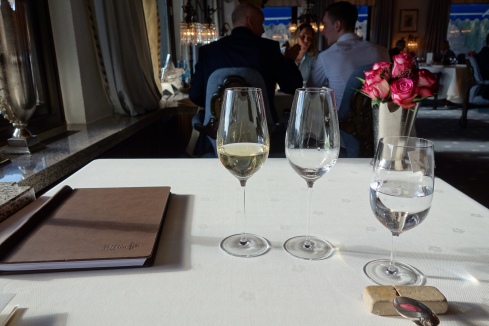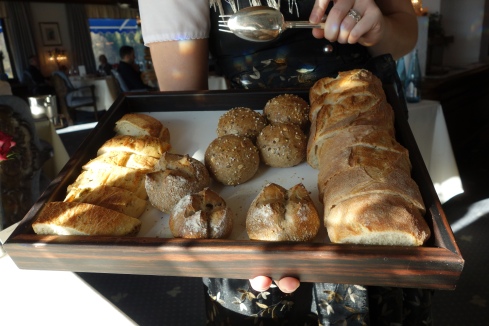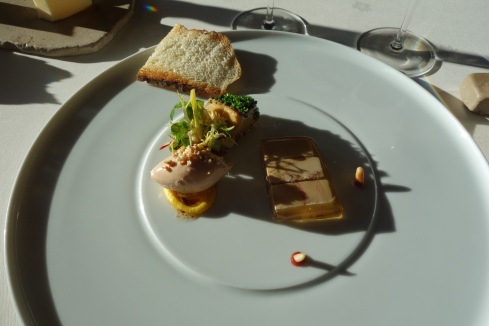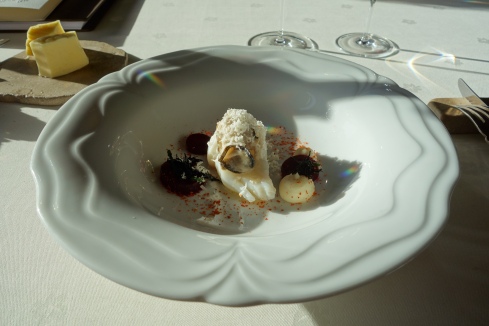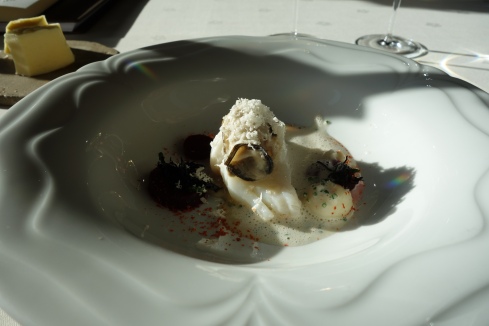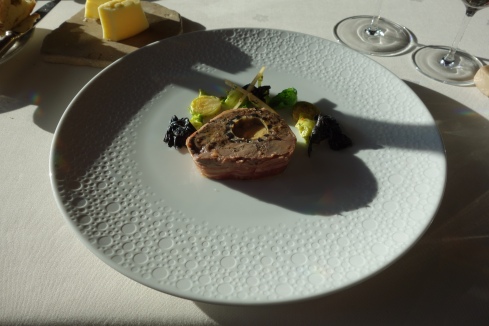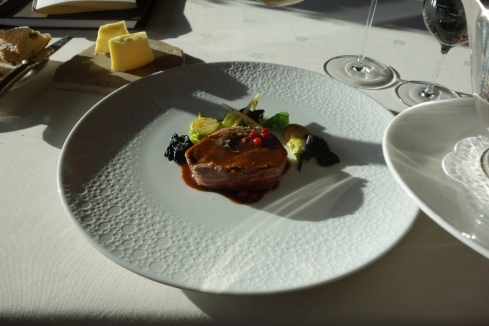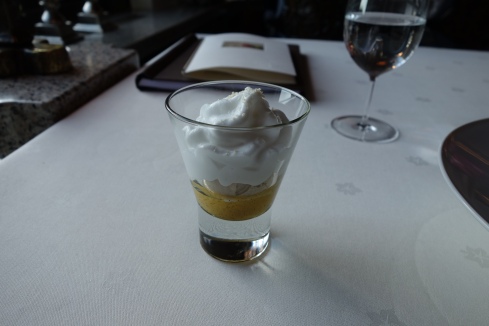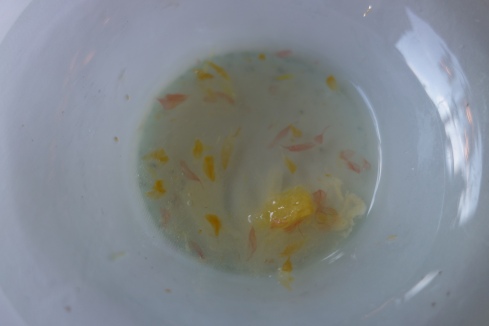Germany rarely comes up as a destination dining country. For the traveller on a budget, this is probably for good reason. Sauerkraut, potatoes, dumplings and boiled fleisch, rarely sets pulses racing. However, the German Black Forest is blessed with a number of multiple-starred restaurants. In the small village of Baiersbronn alone, there are two 3-star restaurants (Bareiss, and Schwarzwaldstube) and one 2-star restaurant, Sackmann.
As a local remarked to me, “we used to go to Alsace [across the German-French border] to have a good meal, now the Alsatians come here.”
Germany has a total of 10 3-Michelin star restaurants. The two closest to each other are Bareiss and Schwarzwaldstube, located in the Black Forest town of Baiersbronn. For a village of 15,000 people, that is exceptional. It bore remark from the New York Times in 2013, which has contributed to a trickle of Americans among the mostly French and German tourists to the region. These restaurants have generally been untouched by the international Twitterati and Instagram celebrities.
The Bareiss is a grand family-run hotel, with Hermann Bareiss (the patriach) still making the rounds to greet diners after every dinner. I liked this personal touch, and the pictueresque setting of the hotel was really beautiful, with twinkly lights strung up all over the estate during the Christmas season. I had two meals there before Bareiss closed for the season, one a dinner tasting menu, and once for an a la carte lunch.
Bareiss’s chef Claus Peter Lumpp is a life-long member of the Bareiss establishment, having started his career there and generally spent most of his time there aside from a year staging at various 3* temples across the continent.
While The Fat Duck in Britain and elBulli in Spain were taking centre stage in the international gastronomic world in the mid 2000’s, quietly the gastronomic equivalent of a “Wirtschaftswunder” was taking place in Germany. This “Wunder” started in 2004 (2005 guide) when Michelin appointed Joachim Wissler’s Vendôme in Bergisch-Gladbach as Germany’s sixth three-star restaurant. The next year (2006 guide) Christian Bau’s Schloss Berg in Perl-Nennig was admitted to Michelin’s top category and so was Sven Elferveld’sAqua in Wolfsburg in 2008 (2009 guide). Most impressive however, was the historic three-star hattrick in 2007 (2008 guide), with restaurants Amador (then located in Langen), Gästehaus Erfort in Saarbrücken and Restaurant Bareiss in Baiersbronn as the new laureates. Germany currently has no fewer than 11 three-star restaurants. See this link for a full list.
Where three chefs of these new three-star restaurants had at some point in their career worked at Restaurant Schwarzwaldstube in Baiersbronn, Claus Peter Lumpp (b.1964) of Restaurant Bareiss had followed a different path and spent the first years of his training (1982-1985) at ‘the other place’ in Baiersbronn, Bareiss (then called Kurhotel Mittaltal). Bareiss is a family-run destination hotel in the Black Forest, which apart from some 100 luxury rooms and suites, also houses several ‘Stubes’ and the fine dining restaurant called Restaurant Bareiss (‘Bareiss’). Before returning as head chef to the then 2-star Bareiss in 1992, Lumpp worked at some of Europe’s most renowned restaurants, including 3-star restaurants Le Louis XV (Alain Ducasse) in Monaco, Tantris (Heinz Winkler) and Aubergine (Eckart Witzigmann), both in Munich, and Antica Osteria del Ponte (Ezio Santin) in Milan. At Bareiss he succeeded Paul Mertschuweit, also known as “the tongue of Bareiss”. – Elizabeth Auerbach
The cooking, both here and at Schwarzwaldstube, brought to mind an earlier era of French cuisine. It doesn’t feel like nouvelle cuisine, but rather modern classic French cuisine – because of the classic and heavy sauces, with incredible terrestial ingredients in foie and game. Bareiss is by far the more formal of the two, possibly because it is the “younger” restaurant measured by age at the three-star table.
There are three features of Claus Peter Lumpp’s cooking that I like. First, it is classical French, updated with innovative touches. His cooking features the generous ingredients of foie, lamb, deer, chicken, all with heavy sauces. It is influenced by regional dishes (cassoulet, tarte flambee). In an age where chefs generally have a light touch, his take-no-prisoners style of salting and saucing is paradoxically and figuratively refreshing, and literally food-coma-inducing. The salt is really on the high side, though never unpleasant.
Second, the classical preparations are moderated by touches of fruit in his compositions. His red-wine-caramel and foie terrine, justly praised, would be a lot more heavy if it were not paired with Williams Pear. His tarte flambee has a delicious plum sauce. His pheasant soup has the crunch of unskinned grapes, his scallops have citrus, and the apple dessert is a marvelous assembly of apple textures.
Thirdly, the preparations are exuberant. He prepares multiple variations on a theme, like Pierre Gagnaire, and allows the diner to try his different experiments. His dishes within a theme often don’t harmonize (they are separate dishes and should be treated as such), but it shows there is a highly creative mind at work.
The weaknesses of his cooking are more minor. His Asian preparations aren’t all that – a Japanese tartare of scallops with soy and seaweed, or slices of lamb breast prepared with an Indian tandoori sauce, or a cold kingfish sushi served as appetizers, are obvious and in some ways “basic” interpretations of the Japanese and Indian style. But this is to be expected of a restaurant which caters 90% to German and French on either side of the border, and 10% Americans. These dishes however are only on the a la carte menu, and apparent to repeat diners.
The wine service is well-led by Jurgen Fendt, one of the best sommeliers in Germany (he has represented the country three times at the Sommelier World Cup). A selection of red wine from Fendt’s own vineyard was probably my favorite wine of all he offered me at Bareiss.
For those who care, the differences between Bareiss and Schwarzwaldstube are:








